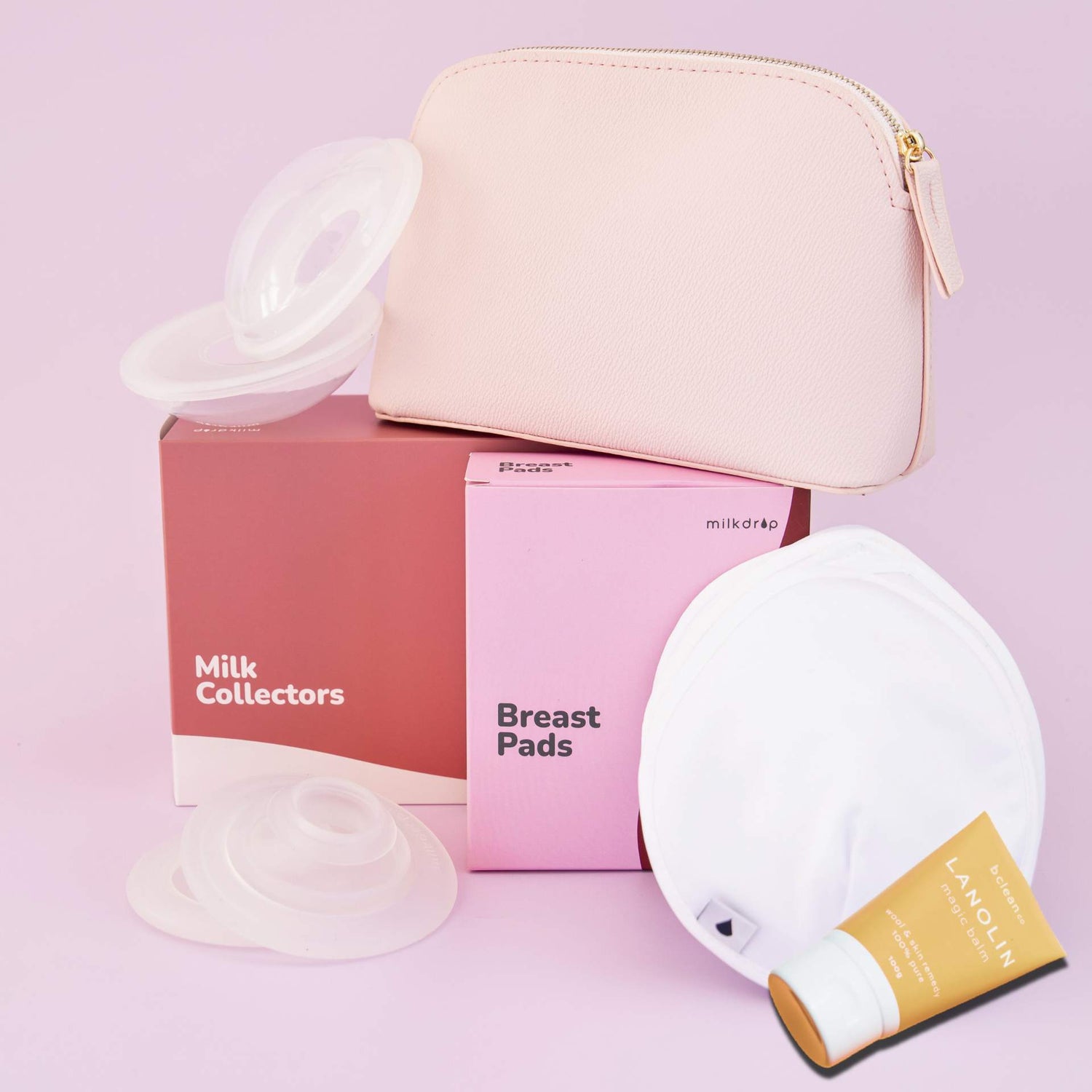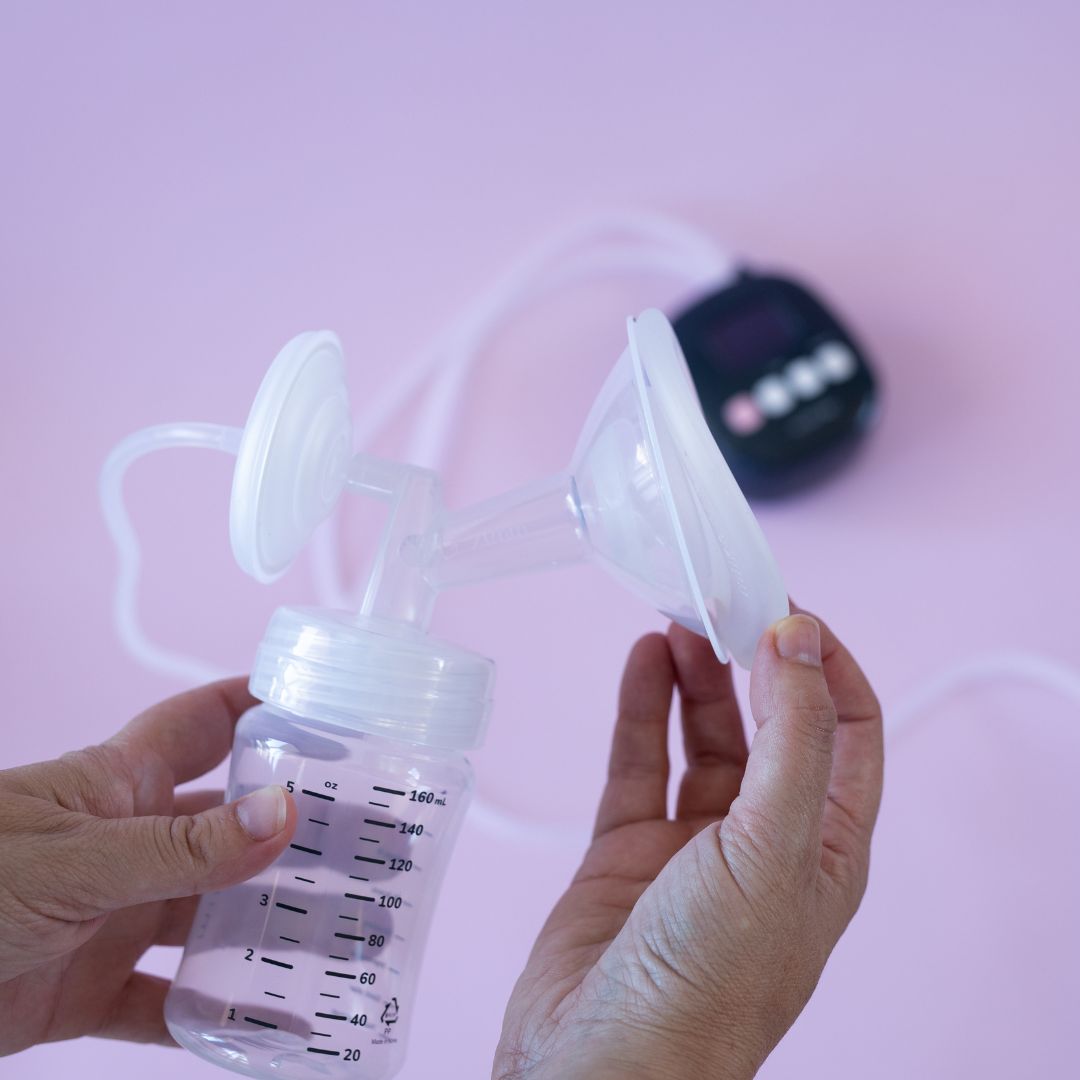As a breast pump company, it's pretty shocking to us that women’s pain continues to be overlooked and underestimated and research on women’s bodies is seriously underfunded.
The breast pump was designed over 200 years ago, yet women STILL expected to put up with pain, damage and “feeling like a cow”.
Almost 70% of Australian mums will use a pump, and 80% of them will have a negative experience (and these numbers are even higher in the States) - that’s hundreds of thousands of women who will struggle when they need the most support.
The breast pump is just one example of products specifically designed for us that leave us in pain (there are many others), but it's why gender-sensitive design is SO important to us here at Milkdrop.
We sat down with Milkdrop founder, Alex, to find out why gender-sensitive or women-sensitive design is a driving principle when we're creating products at Milkdrop.
Let's kick things off with some examples of where women-centred design could have been used but wasn’t:
MD: What does gender-sensitive design mean to you?
A: There are all sorts of design practices we use to create products, places and policies for our society. But these design practices chronically overlook the experiences of some groups of people.
You’ve probably heard that crash test dummies are designed for the 50th percentile man, which has serious consequences for how cars are designed and therefore the safety for the people driving them. This article runs through all the ways women are short-changed in design and this book goes into even more detail.
Because of the field I’m in (designing breast pumps), we use the term gender-sensitive-design or women-centred design (WCD) as shorthand for this design practice of making sure we’re including the person who is using our device all the way through – problem definition to idea to product. And not just one woman either, lots of women with diverse opinions, because unsurprisingly, we’re not all the same.
MD: When did you first hear of gender-sensitive-design?
A: I first came across the idea working at my old company, Arup. We were doing a project with research group from Monash University called XYX Lab, led by Dr Nicole Karms, and Plan International. The research team were looking at all the places in cities that women and girls felt unsafe and why. As city designers – engineers, planners and specialists in security, lighting, civil infrastructure, architecture – it was pretty confronting to realise that your design decisions have unconsciously made spaces feel so unsafe for so many people. They picked one area – lighting and night-time safety – and were able to show that brighter isn’t safer, amongst other things. Creating super bright zones also creates high contrast areas and stark dark areas that make you feel more unsafe.
I’m not sure it was termed gender-sensitive design, but it was the first time it dawned on me that our decisions have vastly different consequences for different people. It is so obvious now, and perhaps I came to it too late, but that’s the truth!
MD: Why is it so important?
A: Because everything in our world is designed. The products we use, the places we live, the digital environment we occupy, our health, work and education systems, even the data we collect – these are all designed for our societies. We have made particular decisions about how they should look and work, some conscious and some not.
If we’re repeatedly not considering the full diversity of experiences in our design practices, we’re creating societies, environments and products that don’t work as well as they could.
MD: How do we incorporate it in our business?
A: In principle, we involve the people who ultimately use our products all the way along the design process.
In practice, here are some examples of what this looks like:
- We try to spend time to understand the problem each person faces post-partum through qualitative surveys, quantitative surveys and interviews. We did a lot of this at the start, but we also do surveys quite regularly to dig down into problems or insights or ideas we’ve had as we build our product and business.
- We try to avoid generalising based on our own experience. I’m a woman who pumped breastmilk for my daughter, but I’m not representative of all people who have ever pumped. Therefore, my input is not the only input that matters in design, just because I happen to also be an engineer working on breast pumps.
- We offer a trial period where people can use our product and return it for a full refund, whatever the reason. When people come to us with issues, we try to understand what happened and try to uncover any issues or causes we hadn’t seen. Then we try to design a product to help them (see next point).
- We continually designing products for specific groups of people based on feedback. In our first product, we found that about 75% of people loved our design, but 25% collected less milk. We prototyped a new product for those 25% to try to improve the amount of stimulation they felt when using the pump. We manufactured it and sent it out to the original group to see if it worked better for them. Commercially, this probably wasn’t viable on its own or in the short run, but in the long run, it allowed us to build systems that would mean we could make changes to adapt our designs to suit people much better.
- We try to find clever ways to manufacture without having to create massive orders. A barrier to creating something bespoke to each person is cost and ‘manufacturability’. By choosing softer, more expensive, materials, we were able to fit more people with the same design because the material stretches to their shape. Rather than making the person squish their body into the product, it’s the other way around!
MD: Where can we read more?
A. Here are some resources and examples of design that I find motivating. There’s a mix of business, projects, research groups and campaigns. They’re all worth a look:
- The Tampon Book Project: A project by The Female Company in Germany challenging the tampon tax and advocating for menstrual equity. Website: https://thetamponbook.com/
- Invisible Women by Caroline Criado Perez explores invisible bias in our everyday lives. Website: https://www.penguin.com.au/books/invisible-women-9781784706289
- XYX Lab: A research group at Monash University in Australia creating solutions and resources that address the gendered and intersectional dimensions of urban spaces and technologies. Pick any of their projects. Website: https://xyxlab.com/
- Verve Super: An Australian superannuation fund providing financial services and investment options that prioritize the needs and values of women. Website: https://vervesuper.com.au/
- Ovira: Drug-free wearable pain relief devices for menstrual cramps and endometriosis. Website: https://www.ovira.com/
- Madami: A purpose-driven advisory and innovation agency specializing in women's health and wellness. Website: https://madami.co/
- Unconform Studio: A design studio in India creating products and services that prioritize the needs of women and marginalized communities. Website: https://www.unconformstudio.com/
- Ceer Medical: A company creating medical devices and technologies that address the unique needs of women's health, such as the Nella NuSpec speculum. Website: https://ceekwomenshealth.com/
- Program Design with the Chroma Collective from ideo: https://www.ideo.org/perspective/a-playful-tool-to-design-more-gender-inclusive-programs



